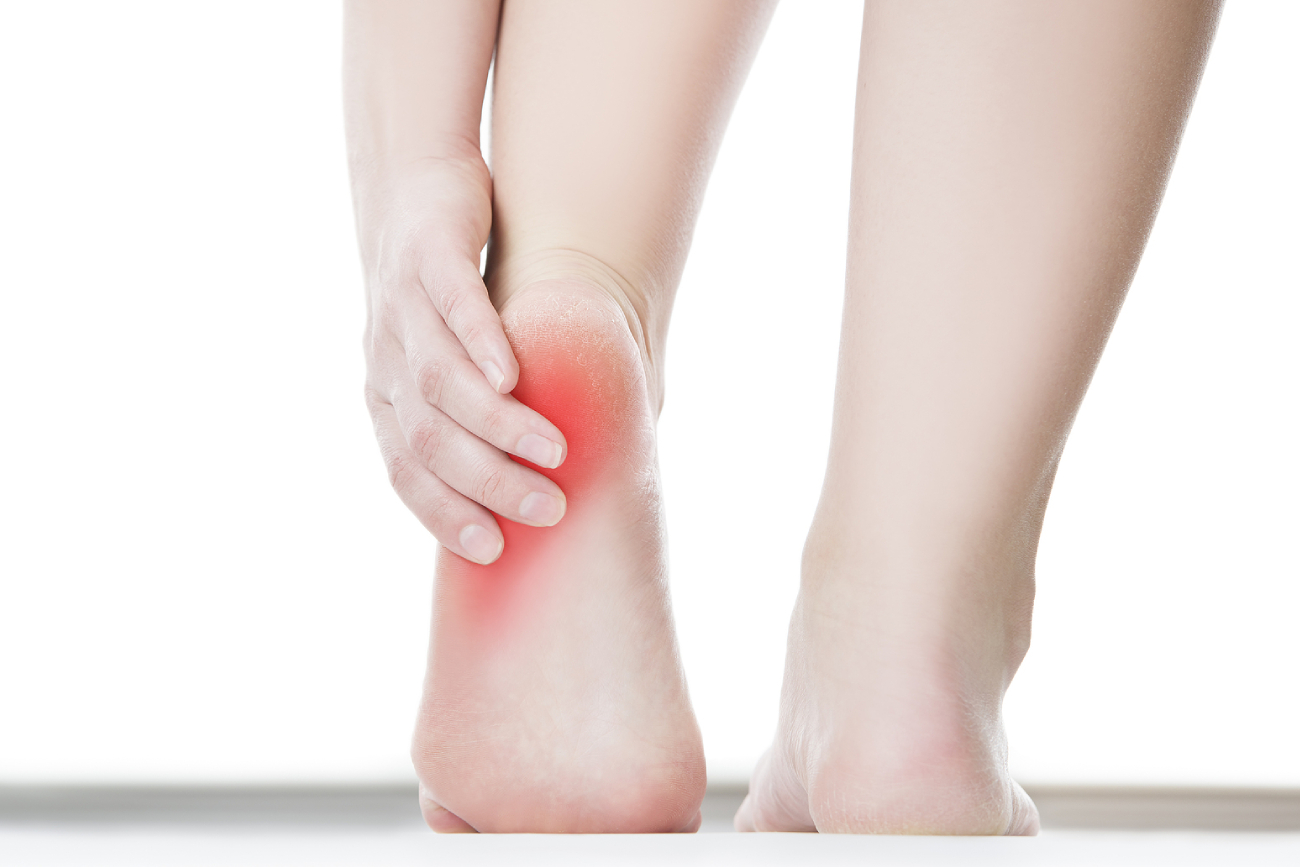Heel pain can sneak up on anyone. One morning you step out of bed, and that sharp, stabbing ache greets you. Or perhaps it hits after a long walk, a busy day at work, or even just standing in one place for too long. Heel pain can be frustrating because it makes even simple daily activities uncomfortable—but understanding why your heel hurts when walking is the first step toward relief and getting back to your everyday life.
Plantar Fasciitis: The Usual Suspect
Most cases of heel pain can be traced back to plantar fasciitis, which develops when the thick band of tissue along the bottom of your foot—the plantar fascia—becomes stressed and inflamed. This tissue supports the arch and acts as a shock absorber whenever you walk, run, or stand. When overworked, tiny tears can form, leading to inflammation and that familiar sharp pain, especially first thing in the morning or after long periods of rest.
Common causes of plantar fasciitis include:
- Overuse or repetitive stress – Activities like running, long-distance walking, or standing for extended periods can irritate the plantar fascia.
- Unsuitable footwear – Wearing shoes with poor support for long hours, such as slippers on long shopping trips or dress shoes on outdoor walks, can increase pressure on the heel.
- Excessive load or weight-bearing – Extra body weight from pregnancy, carrying heavy bags, or physical work adds stress to the plantar fascia.
- Sudden changes in physical activity – Starting new exercises or high-impact classes without proper warm-up or conditioning can trigger symptoms.
- Tight calf muscles or Achilles tendon – Reduced flexibility increases tension on the plantar fascia, making it more prone to inflammation.
While rest, stretching, and supportive footwear help, many people need more targeted treatment for chronic cases. Shockwave therapy for plantar fasciitis in Singapore has become a popular and effective solution. Also known as ESWT (Extracorporeal Shockwave Therapy), this non-invasive procedure uses acoustic energy to stimulate healing, increase blood flow, and reduce inflammation in the affected tissue. By desensitising nerve endings and promoting collagen production, shockwave therapy not only relieves pain but also encourages the plantar fascia to heal naturally.
At clinics like Feet First Podiatry Clinic, shockwave therapy is delivered with precision, typically ranging from 4,000 to 8,000 shocks per session depending on severity. It’s safe, non-invasive, and requires no downtime, allowing patients to return to daily activities immediately. Many patients find it particularly beneficial when conventional treatments such as stretching, orthotics, or night splints haven’t provided sufficient relief.
Combining shockwave therapy with proper footwear, stretching, and professional guidance under a podiatrist’s care often provides the best results—speeding recovery, reducing pain, and preventing future flare-ups.
Heel Spurs: Tiny Bumps, Big Impact
Heel spurs are small bony growths on the heel bone. Often developing alongside plantar fasciitis, they don’t always cause pain by themselves. However, when the surrounding tissues become irritated, they can produce sharp discomfort, especially when standing or walking for long periods. Managing inflammation is key to relieving pain from heel spurs, and many treatments for plantar fasciitis also help here.
Achilles Tendinitis: Overuse Behind the Heel
The Achilles tendon connects your calf to your heel. Overuse, sudden activity increases, or tight calf muscles can trigger Achilles tendinitis. Pain usually appears at the back of the heel, worsens with movement, and can make running, jumping, or even long walks uncomfortable. Early intervention with stretching, physical therapy, and activity modification prevents this condition from becoming chronic.
Bursitis: When Cushioning Fails
Bursae are fluid-filled sacs that cushion your joints and tendons. Inflamed bursae at the heel—retrocalcaneal bursitis—can lead to swelling, tenderness, and pain while walking. This condition often arises from repetitive stress, high-impact activities, or poorly fitted shoes. Ensuring proper footwear and adjusting daily habits are essential to prevent bursitis or reduce its impact.
Stress Fractures: Tiny Cracks, Big Trouble
Stress fractures are small cracks in the heel bone caused by repeated impact or overuse. Athletes or people who suddenly increase activity levels are at higher risk. Pain is usually localised and worsens during activity, improving only with rest. Treatment typically involves reducing weight-bearing activities and gradually returning to exercise once healing is confirmed.
Nerve Issues: Pain That Travels
Sometimes, heel pain isn’t just about bones and muscles—it can be a nerve problem. Conditions like tarsal tunnel syndrome occur when a nerve in the heel is compressed, causing burning, tingling, or sharp pain. Seeing a foot doctor in Singapore ensures proper diagnosis and targeted treatment, which can prevent the pain from spreading or becoming chronic.
Risk Factors That Make Heel Pain More Likely
Certain factors increase the likelihood of developing heel pain:
- Flat feet or high arches that strain the heel
- Extra weight that increases pressure on your feet
- Age, particularly 40–60, when tissues naturally wear down
- Jobs or hobbies that involve prolonged standing or walking
When to Seek Professional Help
Occasional heel pain may improve with rest and stretching, but persistent discomfort deserves expert attention. A podiatrist can provide:
- Accurate diagnosis: Heel pain can stem from various causes. Misdiagnosis can prolong recovery.
- Targeted treatments: Options include physical therapy, orthotics, footwear advice, anti-inflammatory strategies, and advanced therapies like shockwave therapy.
- Prevention strategies: Guidance on daily habits, exercises, and footwear choices to prevent future flare-ups.
Early consultation not only helps relieve pain faster but also prevents chronic issues that could require more invasive interventions. Your feet are your foundation—investing in their health pays off in long-term mobility and comfort.
Conclusion
Heel pain doesn’t have to keep you from moving comfortably. From plantar fasciitis and heel spurs to Achilles tendinitis, bursitis, stress fractures, and nerve issues, understanding the cause is the first step toward relief. While home care and supportive footwear can help, professional guidance ensures accurate diagnosis and the most effective treatment plan.
For personalised care and advanced treatment options, consult the experts at Feet First Podiatry Clinic. Our team provides thorough assessments, tailored solutions, and treatments like shockwave therapy for plantar fasciitis to get you walking comfortably again. Don’t let heel pain slow you down—take the first step toward healthier feet today.

